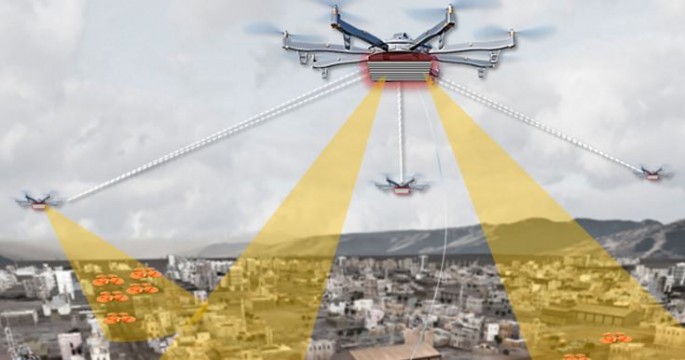The U.S. Defense Advanced Research Projects Agency (DARPA) is responding to the future military threat posed by the proliferation of civilian and military unmanned aerial systems (UAS) with a project that will provide persistent surveillance of UAS'.
DARPA said U.S. military forces will increasingly be challenged by the need to quickly detect and identify UAS'--especially in urban areas where lines of sight are limited, and where objects might be moving at similar speeds.
DARPA has announced its "Aerial Dragnet Program" seeking innovative technologies that provide persistent, wide-area surveillance of all UAS operating below 1,000 feet in a large city.
"Commercial websites currently exist that display in real time the tracks of relatively high and fast aircraft -- from small general aviation planes to large airliners -- all overlaid on geographical maps as they fly around the country and the world," said Jeff Krolik, DARPA program manager.
"We want a similar capability for identifying and tracking slower, low-flying unmanned aerial systems, particularly in urban environments."
Although several systems are being developed for tracking small UAS by extending surveillance methods used in open areas where large line-of-sight buffers reduce the threat, these systems are impractical for operation in urban terrain.
Aerial Dragnet seeks to leapfrog these approaches by developing systems adapted to the fundamental physics of small UAS in urban environments that could enable non-line-of-sight (NLOS) tracking and identification of a wide range of slow, low-flying threats.
The program seeks an array of innovative approaches, but envisions a network of surveillance nodes, each providing coverage of a neighborhood-sized urban area. These nodes might be mounted on tethered or long-endurance UAS.
Using sensor technologies that can look over and between buildings, the surveillance nodes will maintain UAS tracks even when the craft disappears from sight around corners or behind objects.
The Aerial Dragnet program seeks teams with expertise in sensors, signal processing, and networked autonomy to achieve its goal.
A Broad Agency Announcement (BAA) solicitation detailing the goals and technical details of the program was posted on FedBizOps today and is available at http://go.usa.gov/xBx4A.
While Aerial Dragnet's focus is on protecting military troops operating in urban settings overseas, the system could ultimately find civilian application to help protect U.S. metropolitan areas from UAS-enabled terrorist threats.



























